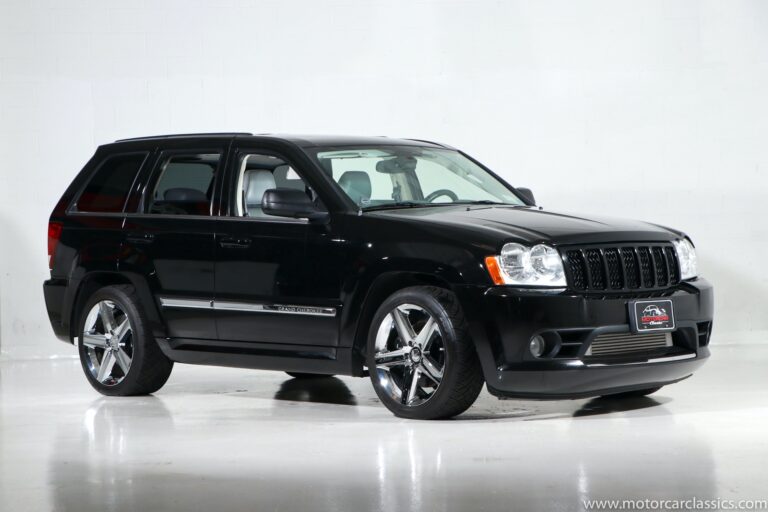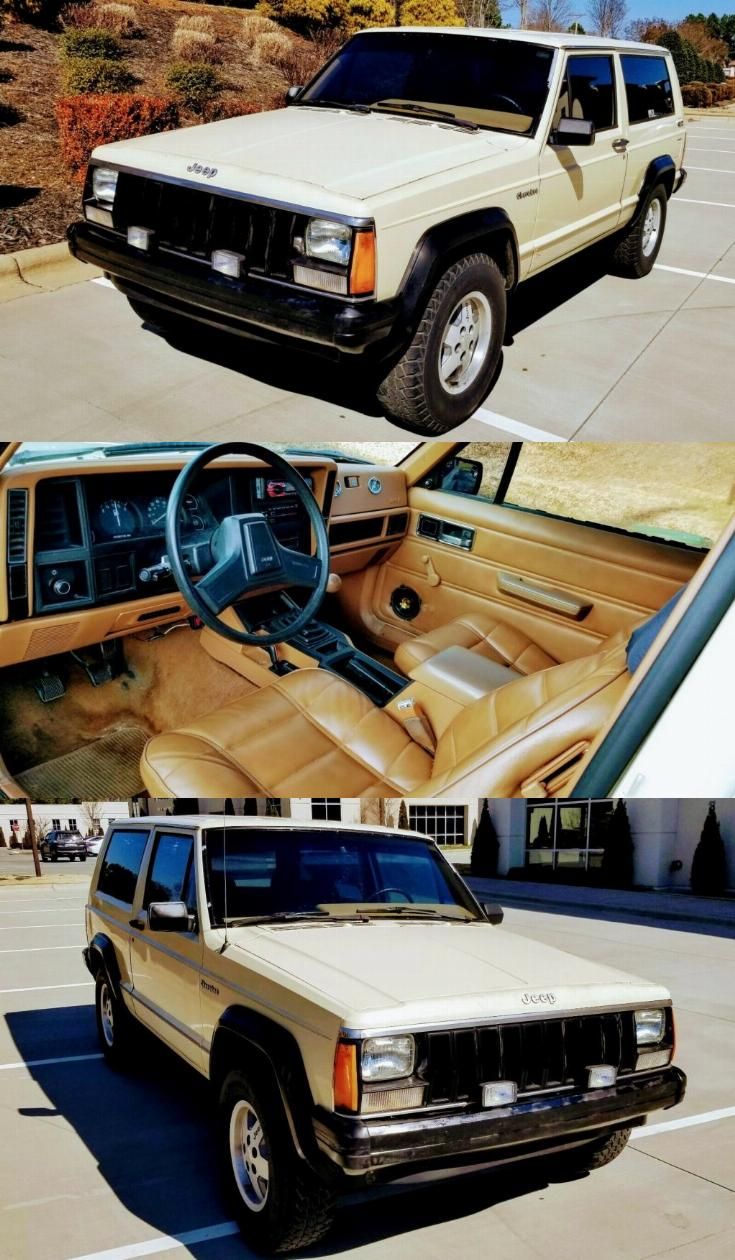1980 Jeep J10 For Sale: Your Ultimate Guide to Owning a Vintage American Icon
1980 Jeep J10 For Sale: Your Ultimate Guide to Owning a Vintage American Icon jeeps.truckstrend.com
The year 1980 marked a significant point in the history of American pickup trucks, and among the most distinctive offerings was the Jeep J10. More than just a utility vehicle, the 1980 Jeep J10 represents a blend of rugged capability, classic American styling, and a burgeoning sense of nostalgia that makes it highly sought after in today’s vintage vehicle market. For enthusiasts, collectors, or anyone seeking a unique and robust workhorse, finding a 1980 Jeep J10 for sale isn’t just about acquiring a vehicle; it’s about investing in a piece of automotive heritage, a testament to an era when trucks were built to last, often with an unmistakable character that modern vehicles struggle to replicate. This comprehensive guide will navigate you through the allure, the specifics, and the practicalities of acquiring your very own 1980 Jeep J10.
The Enduring Appeal of the Jeep J10
1980 Jeep J10 For Sale: Your Ultimate Guide to Owning a Vintage American Icon
Born from the long-running "J-series" line of full-size Jeep trucks, which began in 1963, the J10 was the half-ton variant, known for its robust build and legendary four-wheel-drive capabilities. By 1980, the J10 was a mature design, benefiting from years of refinement while retaining the no-nonsense utility that defined the brand. Its design, characterized by a long hood, prominent grille, and a simple, yet sturdy, body, embodies the classic American truck aesthetic. Unlike many contemporaries, the J10 carried the Jeep DNA proudly, offering off-road prowess alongside its payload capacity. This combination of vintage charm and genuine utility is precisely what makes the 1980 J10 a compelling prospect for buyers today, whether they’re looking for a weekend adventure vehicle, a unique daily driver, or a restoration project.
Key Features and Specifications of the 1980 J10
Understanding the core specifications of the 1980 J10 is crucial for any potential buyer. These trucks were built for durability, not luxury, but offered a range of configurations to suit various needs.
- Engine Options: The primary engines available were the venerable AMC 258 cubic-inch (4.2L) inline-six, known for its bulletproof reliability and torque, and the more powerful AMC 360 cubic-inch (5.9L) V8, offering greater horsepower for heavier loads or more spirited driving. While the 360 V8 provides more grunt, the 258 I6 is often praised for its simplicity and fuel efficiency (relative to its era).
- Transmission Options: Buyers could choose between a manual transmission (typically a 4-speed) for ultimate control and a robust 3-speed automatic transmission (often the venerable Chrysler TorqueFlite 727 or similar AMC-sourced unit) for easier driving.
- Drivetrain: A hallmark of Jeep, the 1980 J10 offered robust 4×4 systems. Most commonly, you’d find a part-time four-wheel-drive system, engaging the front axle when needed. Some higher trim levels or specific configurations might have featured the full-time Quadra-Trac system, which provided continuous four-wheel-drive capability.
- Axles and Suspension: Solid axles front and rear, typically Dana 44s, provided immense strength and articulation, complemented by leaf spring suspension all around. This setup, while not offering the smoothest ride, was exceptionally durable and capable of handling rough terrain and heavy loads.
- Body Styles: The J10 was primarily available as a regular cab with either a short bed or a long bed, catering to different hauling requirements.
- Interior: The interior was utilitarian, with durable vinyl or cloth seats, a straightforward dashboard, and minimal creature comforts. This simplicity, however, makes them easy to maintain and repair.

Why Buy a 1980 Jeep J10 Today?
The appeal of the 1980 J10 extends beyond its specifications:

- Classic Appeal & Nostalgia: It embodies the rugged spirit of an era when trucks were tools, not just status symbols. Its distinctive looks turn heads and evoke a sense of automotive history.
- Robust Utility: Even decades later, a well-maintained J10 is still a highly capable truck, suitable for hauling, towing, and off-road adventures.
- Investment Potential: Clean, original, or professionally restored J10s are steadily appreciating in value, making them not just a hobby but potentially a sound investment.
- Strong Community & Parts Availability: A passionate community surrounds these classic Jeeps, offering a wealth of knowledge and support. Many mechanical parts are still available new or through specialist suppliers due to the widespread use of AMC engines and Dana axles across various Jeep models.
- Customization Canvas: The J10’s simple, robust design makes it an excellent platform for customization, from mild lift kits and modern wheels to full restomods with updated powertrains.

What to Look For When Buying a 1980 Jeep J10
Purchasing a vintage vehicle requires a keen eye. Here are critical areas to inspect:
- Rust, Rust, Rust: This is the number one enemy of any vintage vehicle. Pay close attention to:
- Frame: Inspect for heavy surface rust, pitting, or any signs of previous repairs that might hide structural damage.
- Body Panels: Rocker panels, cab corners, fender wells, bed floors, and tailgate are notorious rust traps. Check for bubbling paint, patches, or Bondo.
- Floorboards & Firewall: Look under the carpet for rot, especially near the footwells.
- Mechanical Condition:
- Engine: Listen for knocking, excessive smoke (blue for oil, white for coolant, black for rich fuel mixture), and unusual noises. Check for fluid leaks (oil, coolant, power steering).
- Transmission: Ensure smooth shifting in automatics, and no grinding or popping out of gear in manuals. Check for leaks.
- 4WD System: Engage and disengage 4WD. Listen for clunks or grinding. Test the transfer case thoroughly.
- Brakes: Check for spongy pedal, pulling, or excessive noise.
- Steering & Suspension: Look for excessive play in the steering wheel, worn ball joints, tie rod ends, or saggy leaf springs.
- Electrical System: Often neglected. Test all lights (headlights, taillights, turn signals, dash lights), wipers, horn, and gauges. Look for frayed or aftermarket wiring.
- Interior Condition: While simplicity is key, check the condition of the seats, dash pad (cracks are common), door panels, and headliner. These can be costly to restore.
- Documentation: Always ask for service records, past registration, and a clear title. A detailed history can reveal how well the truck was maintained.
- Modifications: Assess any aftermarket modifications. Are they well-done? Do they enhance or detract from the vehicle’s value and originality? Poorly executed mods can lead to headaches.
The Buying Process: Tips for a Successful Purchase
- Research Market Values: Use online classifieds, auction sites, and classic car valuation guides to understand what similar J10s in various conditions are selling for.
- Set a Realistic Budget: Beyond the purchase price, factor in potential restoration costs, insurance, and ongoing maintenance.
- Thorough Inspection: If you’re not mechanically inclined, pay for a pre-purchase inspection (PPI) by a trusted mechanic familiar with vintage 4x4s. This small investment can save you thousands.
- Test Drive: Drive the truck extensively. Listen for unusual noises, feel for vibrations, and test all functions. Drive it on different surfaces if possible.
- Negotiate Wisely: Be prepared to negotiate, especially if you find issues during your inspection.
- Insurance & Registration: Research classic car insurance options, which can be more affordable than standard policies. Understand your local registration requirements for vintage vehicles.
Restoration vs. Daily Driver: Understanding Your Goals
Before you even start looking, decide what you want your 1980 J10 to be:
- Full Restoration/Show Truck: This involves a complete teardown, rust remediation, paint, engine rebuild, and interior refresh to bring the truck to concours condition. This is the most expensive path but yields the highest value.
- Reliable Daily Driver: Focus on mechanical soundness, safety, and addressing major rust. Cosmetic imperfections might be acceptable. This balance offers utility without breaking the bank.
- Patina’d Survivor: Embrace the aged look, focusing solely on making the truck mechanically sound and safe. This preserves its history and can be a charming aesthetic.
- Custom Build/Restomod: Install modern drivetrain components, suspension, and interior comforts while retaining the classic exterior. This offers modern performance with vintage looks but can be very costly.
Your budget and mechanical aptitude will heavily influence which path is feasible.
Price Table: 1980 Jeep J10 For Sale – Estimated Values
Please note that these prices are estimates and can vary significantly based on location, specific options (engine, transmission), historical documentation, and market demand at the time of sale.
| Condition Category | Estimated Price Range (USD) | Key Characteristics |
|---|---|---|
| Project/Poor | $2,000 – $6,000 | Significant rust, non-running or major mechanical issues, incomplete, needs full restoration. Primarily for parts or experienced restorers. |
| Fair/Driver Quality | $6,000 – $15,000 | Runs and drives, but has noticeable rust, worn interior, minor mechanical issues, or requires significant cosmetic work. Usable as a driver but not show-ready. |
| Good/Well-Maintained | $15,000 – $25,000 | Minimal rust, solid frame, mechanically sound, presentable paint and interior, may have minor imperfections. Suitable for regular driving or light show duty. |
| Excellent/Restored | $25,000 – $45,000+ | Meticulously restored or exceptionally well-preserved original. Near-flawless paint, interior, and mechanicals. Ready for shows or discerning collectors. Top-tier examples can exceed this range. |
Factors Influencing Price:
- Engine: V8 models often command a premium over I6.
- Transmission: Manual transmissions can sometimes be more desirable for enthusiasts.
- Originality: Highly original, unmolested examples often fetch higher prices.
- Rust-Free Body/Frame: A solid, rust-free foundation is paramount and significantly increases value.
- Service History: Comprehensive documentation adds value.
- Location: Prices can vary regionally based on demand and climate (less rust in dry climates).
Frequently Asked Questions (FAQ)
Q: Are parts for the 1980 Jeep J10 readily available?
A: Mechanical parts (engine, transmission, axles) are generally good due to shared components with other AMC/Jeep vehicles. Body and trim parts can be harder to find new but are available through specialist suppliers, junkyards, or reproduction sources.
Q: Can a 1980 Jeep J10 be a reliable daily driver?
A: With proper maintenance and potentially some upgrades (e.g., electronic ignition, modern cooling components), a J10 can be a reliable daily driver, especially if it’s been well-restored or is a low-mileage survivor. However, expect older vehicle quirks and lower fuel economy.
Q: What kind of fuel economy can I expect from a 1980 J10?
A: Don’t expect modern fuel efficiency. The 258 I6 might get 12-16 MPG, while the 360 V8 typically ranges from 8-12 MPG, depending on driving conditions, gearing, and vehicle condition.
Q: What are the most common problems with the 1980 J10?
A: Rust (especially in the body and frame), electrical gremlins, worn suspension components, and carburetor issues are common. The Quadra-Trac system can also require specific attention.
Q: Is it easy to modify a 1980 J10?
A: Yes, the J10 platform is popular for modifications. Common upgrades include lift kits, larger tires, engine swaps, fuel injection conversions, and interior modernization, thanks to its robust frame and ample space.
Q: Is a 1980 Jeep J10 a good investment?
A: For well-maintained, original, or professionally restored examples, values have been steadily climbing. As a classic truck, its appeal is likely to endure, making it a potentially good long-term investment if acquired wisely and cared for.
Conclusion
The 1980 Jeep J10 stands as a testament to an era of straightforward, tough American engineering. Its rugged good looks, legendary 4×4 capability, and growing collector status make it a highly desirable vintage truck. Whether you’re seeking a capable off-roader, a unique daily driver, or a rewarding restoration project, a J10 offers a driving experience unlike anything modern. By understanding its unique characteristics, knowing what to look for during an inspection, and approaching the purchase with a clear plan, you can find the perfect 1980 Jeep J10 to embark on your next adventure and own a true piece of automotive history.


